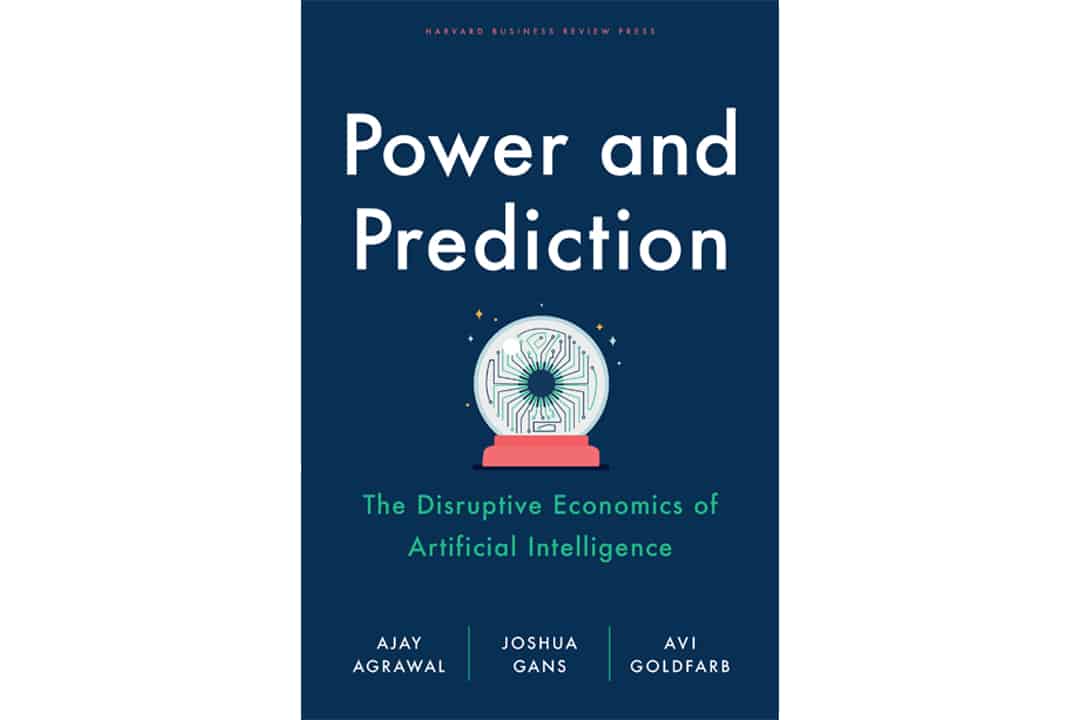The tremendous volume of research papers and news articles that have been published about artificial intelligence (AI) over the past century makes it feel like we should be currently living in a silver screen-worthy, sci-fi universe just shy of Marvel and Star Trek.
With a quick glance over the world around us, we can conclude that that isn’t the case. Why haven’t we seen a more widespread change across society that reflects the progress made in AI, and what can we do to change it?
Three professors at the University of Toronto’s Rotman School of Management — Ajay Agrawal, Avi Goldfarb, and Joshua Gans — had this very question in their minds when they wrote their book, Power and Prediction: The Disruptive Economics of Artificial Intelligence. The book has been published by the Harvard Business Review Press, and will be launched on November 23, 2022 at a launch event at the Rotman School of Management.
The Varsity spoke with Agrawal about the main takeaway of the book, and the socioeconomic and ethical implications of businesses adopting AI.
The lack of widespread transformation by AI
“There’s a reason that [widespread transformation] hasn’t happened yet, but there’s still a significant basis for hope,” said Agrawal in an interview with The Varsity. He suggested that ‘point solutions’ — the applications of AI to automate specific tasks or processes — are the culprits for this lack of transformation. He and the other authors of Power and Prediction believe that the only way to bring about this transformation is by creating a whole new system in which humans can exist with AI.
This concept, while revolutionary for AI, can be seen throughout the history of humanity in the form of societal disruptions due to technological advancements. Agrawal reflected on some of the lessons we can learn from our previous experiences, citing the example of electricity and the impact that it has had on society. While Thomas Edison introduced electricity in Manhattan, New York in 1882, most residential areas continued to use gas light and candles for another 50 years. Agrawal also points out that “the value proposition of what this technology actually delivers may turn out to be significantly different than what we think it is today.”
To automate or not to automate
Agrawal said that both big and small companies enjoy upper hands when it comes to implementing AI. Big companies have a significant edge due to their sheer amount of data and the complete control that they have over their systems. This makes it easier for them to change the system, rather than simply implementing AI. On the other hand, smaller companies can implement necessary changes to their structure more swiftly without the concern of these changes clashing with their current processes, as is the case with large companies.
According to Agrawal, when choosing between preexisting methods versus automating a process with AI, the North Star for decision makers is the return on investment of each of the choices.
Though it may feel safer to settle for preexisting methods, Agrawal cautioned that leaders and decision-makers should remember that we are not in a static world. He continued, “The rest of the world keeps going as it is today. But you have to imagine, if we don’t change, one of our competitors might change and, all of a sudden, that may give them a significant cost or speed advantage.”
Ethics, policies, and biases
Many companies have not been able to see their technological advancements come to light due to regulatory and international barriers. However, this is changing as there has been a growing focus on building policies surrounding AI in several countries.
Agrawal sees these policies moving in a direction that shifts the focus from the technology to the systems as a whole, thus easing the process of implementation.
As with all technology, the virtues of AI are coupled with its vices, one of the most prominent of which is the ethical concern surrounding the technology. Agrawal, however, notes a very important point. He mentions how there are two stages to solving biases: detecting them and then solving them. It is difficult to do either when dealing with humans. We are required to use covert means of locating bias, and the evidence surrounding bias training has a negative side as well. On the other hand, we can ask an AI countless questions to locate their biases and make the required corrections by simply improving the algorithm or the dataset on which it is trained.
Needless to say, we are currently living on the cusp of a technological revolution. While the thought can bring up feelings of wonder and excitement, it also results in us pondering over how to create a foundation that is sustainable and ethical. On this note, Agrawal leaves us with a parting thought: if we want to create something that improves society, he outlined, we have to be prepared to disrupt the system as we know it.


